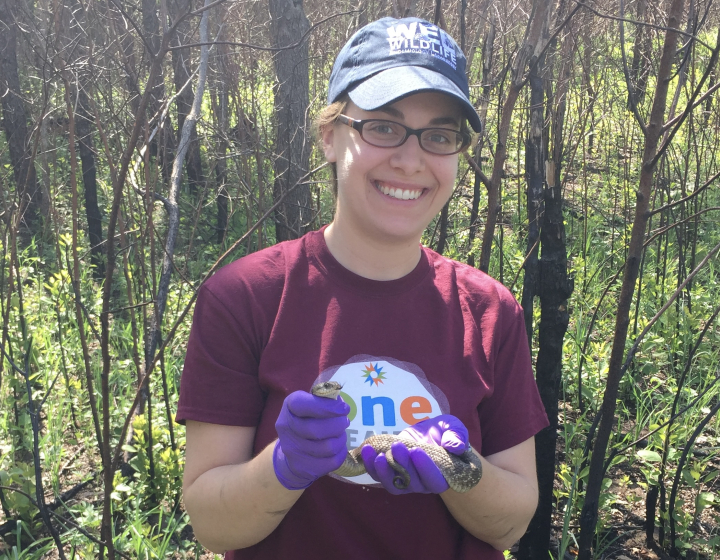Nemo and anesthesiology: pain management for a pig
This year marks the first anniversary of the dedication of the Nemo Farm Animal Hospital at Cornell University, named after a very special patient—a 730-pound, Oreo-colored Hampshire pig that inspired and rallied the entire CUHA community. Nemo had B-cell lymphoma, an aggressive form of blood cancer, and was the first pig documented to receive treatment for the disease. The treatment plan was comprehensive, and required collaboration across almost every specialty at the hospital. Thanks to innovative efforts from the team of clinicians, Nemo’s cancer went into remission for more than a year. Although Nemo passed away, his case catalyzed new approaches and knowledge for large animal cancer patients. One of those services includes anesthesiology.
The anesthesia service at the Cornell University Hospital for Animals (CUHA) played a vital role in Nemo’s care during his treatment for lymphoma. Not only did the pig require anesthesia for nearly every procedure he underwent, but the service also prescribed pain management medication to ensure he was comfortable during his time at the hospital.
“We worked with Nemo many times,” says Dr. Luis Campoy, section chief of anesthesiology at CUHA. “He needed to be sedated every time he received chemotherapy.” Even though the clinicians had implanted an intravascular port to help make the repeated injection of chemotherapy drugs easier to do, the needle still had to puncture the pig’s thick skin. “Pigs present unique challenges,” explains Dr. Jordyn Boesch, a lecturer in anesthesiology and analgesia who worked extensively with Nemo during his stay. “They just will not tolerate injections, so they do need to be heavily sedated.”
For these reasons, the anesthesiology team was needed for every surgery and ultrasound Nemo received, responsible for not only inducing sedation, but also monitoring all of the pig’s vitals to make sure everything remained safe and stable.
Even with Cornell’s extensive experience in treating large animals, working with Nemo could be a challenge. “Pigs of this size are not easy to work with,” Campoy notes. He describes how the team had to devise techniques to properly position the pig before and after sedation in order to ensure other procedures could take place. “We required ramps, pulleys, ropes—it required a lot of logistics and hours of preparation every time,” says Campoy, “so there was a bit of a learning curve involved.”
Additionally, due to Nemo’s size, he was at risk of overheating during a procedure. The team devised a way to increase his comfort level by using large fans him while bathing him in water and alcohol. “It was always a bit of an all-hands-on-deck situation for his procedures,” Boesch recalls.
Another hurdle was the fact that most of Nemo’s procedures had to take place in his stall. “When you’re outside the OR, it’s always a more unpredictable environment,” says Campoy. “You aren’t able to control things as much.” Nevertheless, it’s all part of a day’s work for the anesthesiology team. “This hospital is a pleasure to be a part of,” Campoy explains. “At Cornell, there’s always a lot of mutual respect and appreciation, and that translates to a higher quality of overall outcome.”
Through his many days spent there as a patient, Nemo became a beloved icon of the Farm Animal Hospital that now bears his name. “He was a wonderful boy,” says Boesch. “We all got attached to him. We were all sad when we lost him. But, I think we were comforted by the fact that we knew we had done all we could do for him, that he had lived such a good life here, and that he helped spark new understanding and knowledge for future large animal patients.” Thanks to Nemo, and his owners, and the medical team that fought for him every step of the way, the Nemo Farm Animal Hospital will have a lasting legacy of excellence in farm animal care.



